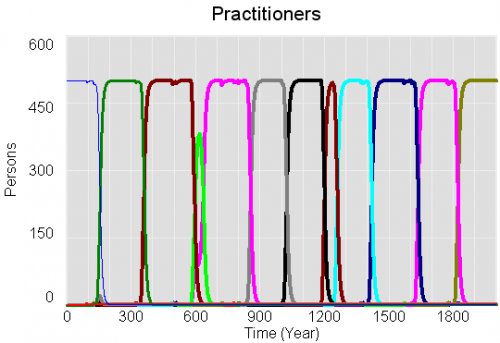In response to the question, “is there still time for a transition to sustainability,” John Sterman cited Donella Meadows,
The truth of the matter is that no one knows.
We have said many times that the world faces not a preordained future, but a choice. The choice is between different mental models, which lead logically to different scenarios. One mental model says that this world for all practical purposes has no limits. Choosing that mental model will encourage extractive business as usual and take the human economy even farther beyond the limits. The result will be collapse.
Another mental model says that the limits are real and close, and that there is not enough time, and that people cannot be moderate or responsible or compassionate. At least not in time. That model is self-fulfilling. If the world’s people choose to believe it, they will be proven right. The result will be collapse.
A third mental model says that the limits are real and close and in some cases below our current levels of throughput. But there is just enough time, with no time to waste. There is just enough energy, enough material, enough money, enough environmental resilience, and enough human virtue to bring about a planned reduction in the ecological footprint of humankind: a sustainability revolution to a much better world for the vast majority.
That third scenario might very well be wrong. But the evidence we have seen, from world data to global computer models, suggests that it could conceivably be made right. There is no way of knowing for sure, other than to try it.

